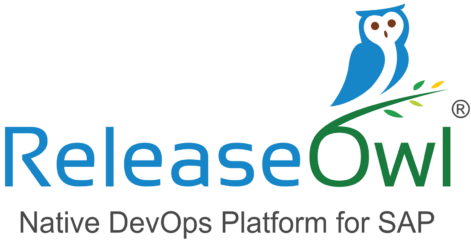SAP Learning Organization
Filter By
Browse By
- SAP Analytics and AI
- SAP Application Development and Integration
- All SAP Application Development and Integration
- SAP ABAP
- SAP ABAP Development Tools
- SAP ABAP Test Cockpit
- SAP API Management
- SAP BAPI
- SAP Basis
- SAP BRF
- SAP Business Application Studio
- SAP CMS
- SAP Design Studio
- SAP Development Tools
- SAP DevOps
- SAP EAI
- SAP EDI
- SAP Extension Suite
- SAP Fiori
- SAP Fiori Elements
- SAP Integration Suite
- SAP Low Code Application Development
- SAP Low Code Automation
- SAP Netweaver
- SAP Release Management
- SAP UI5
- SAP Web Application Server
- SAP Web IDE
- SAP Business Process Management
- SAP Center of Excellence
- SAP CIO
- SAP Customer Experience
- SAP Data and Data Management
- All SAP Data and Data Management
- SAP BW
- SAP BW/4HANA
- SAP Crystal Reports
- SAP Data Archiving
- SAP Data Center
- SAP Data Governance
- SAP Data Integration
- SAP Data Migration
- SAP Data Quality
- SAP Data Services
- SAP Data Strategy
- SAP Data Visualization
- SAP Data Warehouse Cloud
- SAP DMS
- SAP Document Control
- SAP EIM
- SAP ETL
- SAP ETL Tools
- SAP HANA
- SAP HANA Administration
- SAP HANA Deployment Infrastructure
- SAP HANA Studio
- SAP Master Data
- SAP Master Data Governance
- SAP MDM
- SAP Enterprise Architect
- SAP Enterprise Asset Management
- SAP ERP
- SAP Finance
- All SAP Finance
- SAP Accounting
- SAP AR AP
- SAP Asset Accounting
- SAP Billing Systems
- SAP BPC
- SAP BRIM
- SAP Cash Management
- SAP Central Finance
- SAP Controlling
- SAP COPA
- SAP Cost Center Accounting
- SAP Currency Risk
- SAP e-invoicing
- SAP FICO
- SAP Finance Automation
- SAP Advanced Financial Closing
- SAP Financial Consolidation
- SAP Financial Planning
- SAP FX Risk
- SAP General Ledger
- SAP Global Tax Management
- SAP Hyperion
- SAP Order to Cash
- SAP Payment Processing
- SAP Profitability Analysis
- SAP Rebate Management
- SAP S/4HANA Finance
- SAP SWIFT Compliance
- SAP Treasury Management
- SAP Universal Journal
- SAP Governance Risk and Compliance
- SAP Human Capital Management
- SAP Intelligent Technologies
- SAP Platform and Technology
- All SAP Platform and Technology
- SAP Business Technology Platform
- SAP Cloud
- SAP Cloud Connector
- SAP Cloud Integration Platform
- SAP Cloud Migration
- SAP Cloud Platform
- SAP Cloud Providers
- SAP Cloud Strategy
- SAP Digital Signature
- SAP Container Platform
- SAP HANA Enterprise Cloud
- SAP Digital Asset Management
- SAP Smart Forms
- SAP HEC
- SAP Digital Integration Hub
- SAP Hyperscalers
- SAP Infrastructure
- SAP Messaging
- SAP Quality and Testing
- SAP Security
- SAP Spend Management
- SAP Supply Chain Management
- All SAP Supply Chain Management
- SAP APO
- SAP Asset Management
- SAP Business Network
- SAP Digital Manufacturing Cloud
- SAP Digital Twin
- SAP EWM
- SAP IBP
- SAP Inventory Management
- SAP Label Printing
- SAP Logistics
- SAP Manufacturing
- SAP Manufacturing Automation
- SAP MES
- SAP MII
- SAP MM
- SAP MRO
- SAP MRP
- SAP Order Management
- SAP Plant Maintenance
- SAP PLM
- SAP Production Planning
- SAP S&OP
- SAP SD
- SAP SPM
- SAP Supply Chain Planning
- SAP Track and Trace
- SAP Transportation Management
- SAP System Administration
SAP Learning Organization is an organizational unit within SAP SuccessFactors that helps to manage and deliver training content to users. This comprehensive and coordinated approach to employee training and development seeks to improve talent management, align learning outcomes with performance goals, boost compliance, and train external audiences. These courses have been used by over 1,000 companies across more than 50 countries worldwide.
SAP Learning Organization is a grouping of a company’s employees for the purpose of assigning training. Learning Organizations usually map to organizations that you track in the rest of SAP SuccessFactors, but not always. By offering a variety of learning experiences, including classroom training, e-learning, and on-the-job training, the program is designed to meet the needs of SAP employees at all levels of the organization, from new hires to experienced professionals. SAP Learning Organization courses are also available in a variety of languages, making them accessible to employees around the world.
Key Capabilities of SAP Learning Organization include:
SAP Learning Organization is an organizational unit within SAP SuccessFactors that helps to manage and deliver training content to users. This comprehensive and coordinated approach to employee training and development seeks to improve talent management, align learning outcomes with performance goals, boost compliance, and train external audiences. These courses have been used by over 1,000 companies across more than 50 countries worldwide.
SAP Learning Organization is a grouping of a company’s employees for the purpose of assigning training. Learning Organizations usually map to organizations that you track in the rest of SAP SuccessFactors, but not always. By offering a variety of learning experiences, including classroom training, e-learning, and on-the-job training, the program is designed to meet the needs of SAP employees at all levels of the organization, from new hires to experienced professionals. SAP Learning Organization courses are also available in a variety of languages, making them accessible to employees around the world.
Key Capabilities of SAP Learning Organization include:
- Talent management: Suite of tools and processes to help organizations identify, assess, and develop the skills of their employees.
- Learning alignment: Organizations can align learning outcomes with business goals and objectives.
- Compliance: Helps organizations ensure compliance with external regulations and internal policies.
- Training: Offers a wide range of training solutions for employees, partners, and customers.
Key pillars of SAP Learning Organization include:
- SAP Learning Hub – A cloud-based learning platform that provides access to SAP training content, expert instructors, and a community of SAP users.
- SAP Training and Certification – A program that offers certification exams and coursework to help SAP customers and partners validate their skills and knowledge.
- SAP Partner Academy – A program that provides SAP partners with the training and resources they need to build, market, and sell SAP solutions.
- SAP User Group Academy – A program that provides SAP user group members with access to SAP training content and experts.
Key Considerations for SAPinsiders:
- Tailor SAP learning programs to meet the needs of your organization. Organizations who want to create user groups for their learners have the option to use programs or curricula. The main difference between the two is that curricula are used when there is a need for compliance, while programs are used when there is not. While both have their strengths, curricula are generally better suited for regulated industries where there is a risk of being fined for not properly certifying employees. SAP Learning Organization provides an example of how to set up a curriculum. This approach can be beneficial for companies who need to ensure compliance with industry regulations.
- Ensure that employees are up-to-date on the latest industry compliance trends and developments. SAP Learning Organizations can help companies govern when a user can participate in a particular learning item. For example, a company may require approval from a supervisor before allowing an employee to take a course on compliance. By using SAP Learning Organizations, companies can help ensure that their employees are properly trained on compliance issues.
- Leverage flexible approach to group learning. The “SAP Learning Organization” is different from things like “department” or “division”, which are used for other purposes. The “SAP Learning Organization” helps to express how a company is divided for the purpose of assigning training. For example, even though users may be part of different departments or divisions, they can be treated as part of the same “SAP Learning Organization” because the same courses may be assigned to all of them based on how they’re organized in the company. This helps to ensure that users are receiving the correct training for their needs.
871 results
-

It’s Time for Finance to Captain the Boat
Reading time: 15 mins
Financial planning and analysis (FP&A) is a top financial concern for SAP customers, according to a recent SAPinsider benchmark report, “SAP S/4HANA Finance: State of the Market,” where more than 400 individuals across all lines of business from nearly 150 companies were surveyed regarding their strategy for SAP S/4HANA Finance. However, many organizations are still…
-

 Premium
Premium
How to Navigate HR Data for CRM Team Members
Reading time: 12 mins
/HRUnderstand and quickly fix integration issues between SAP ERP HCM and SAP CRM systems, without having to rely on the HR team. Also learn the basics of SAP ERP HCM and Application Link Enabling (ALE) distribution of organizational data and business partner data from SAP ERP to an SAP CRM system. Key Concept SAP CRM...…
-

How to Manage Enterprise Risk in Remote and Digital Environments
Reading time: 12 mins
As organizations migrate to SAP S/4HANA as part of their digital transformation effort, they should prioritize governance, risk, and compliance (GRC). The Institute of Internal Auditors (IIA) has developed a Three Lines Model to help with that journey. First-line roles include operation and support functions; second-line roles encompass corporate risk, compliance, and quality assurance functions;…
-
-

Unlocking Big Data at SAP TechEd
Reading time: 4 mins
Audio pioneer Dolby Laboratories, which has been delivering audiophiles a superior sound and sight experience since the 1970s, decided in 2016 that it wanted an equally stringent level of quality assurance for its business process testing. The business sought a risk-based automated testing solution to reduce or eliminate regression test coverage gaps and lengthy testing…
-

Reshaping Business Models for the Digital Era
Reading time: 5 mins
Digital technologies are reshaping the world around us, including how companies operate. Mobility, machine learning, Internet of Things (IoT), and other innovations have shifted how companies, customers, partners, and employees interact. Organizations will therefore need to embrace new ways of working and harness their business networks. Learn how SAP plans on keeping the customer at…
-

Putting Ethics into Practice with Your SAP Security Strategy
Reading time: 13 mins
As artificial intelligence (AI) moves toward becoming a standard technology in daily business, companies increasingly need to balance the potential risks posed by AI-based software with the pursuit of growth and success. This article provides guidance on how to mitigate the risks posed by AI software by expanding your existing security standards with a clearly…
-

EY Improves Client Services – and the Bottom Line – by Upgrading the Employee Experience
Reading time: 8 mins
by Cheryl D. Krivda, Contributing Writer EY, a multinational professional services firm, is dedicated to building a better working world. The company helps organizations across industries identify and capitalize on new opportunities, especially as they embrace digital disruption and transform their organizations into innovative, purpose-driven businesses. With nearly 300,000 employees and contingent workers around the world,…
-
-

- SAP Logistics
 Premium
Premium
Sustainability in Logistics Through Machine Learning
Reading time: 4 mins
Logistics plays a key role in supply chain as it pertains to the most important aspect of supply chain- movement of goods and products. That also means it is a major contributor to the carbon footprint a company generates. With exponentially increasing focus on sustainable supply chains, companies today have access to a plethora of…
-

- SAP Cloud Migration
 Premium
Premium
Proactively Monitor SAP Systems in the Cloud
Reading time: 11 mins
Many are embarking on SAP cloud migrations or upgrade projects. While this move to the cloud reaps many benefits such as cost-savings, flexibility, reliability, high availability and data access improvements, it also enables more diverse and flexible landscapes than ever. Jointly created by SoftwareONE and Splunk, SAP gives customers a platform that can correlate SAP…
-

 Premium
Premium
SAP AI – “Built for Business”
Reading time: 7 mins
In the ever-evolving world of technology, artificial intelligence (AI) is taking center stage. The potential of generative AI and Large Language Models (LLMs) are fueling corporate dialogues and making headlines. However, as exciting as these cutting-edge technologies may be, translating these groundbreaking technologies into tangible business benefits poses a considerable challenge for organizations which are…
Become a Member
Unlimited access to thousands of resources for SAP-specific expertise that can only be found here.
Become a Partner
Access exclusive SAP insights, expert marketing strategies, and high-value services including research reports, webinars, and buyers' guides, all designed to boost your campaign ROI by up to 50% within the SAP ecosystem.
Upcoming Events
-

SAPinsider ERP Transformation Summit
October 22 - 23, 2025
New Orleans, Louisiana
United States
View Event
Related Vendors
Your request has been successfully sent

